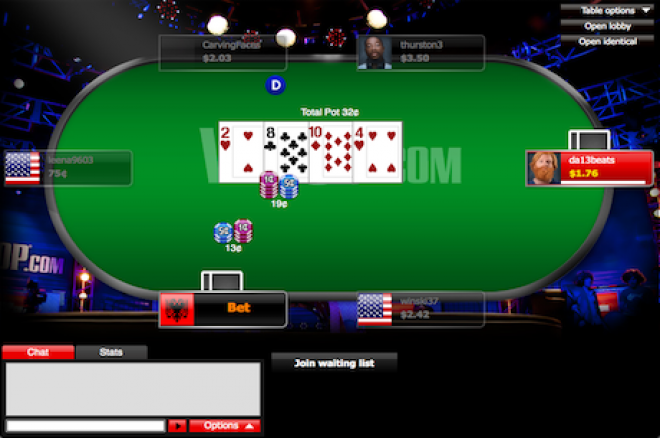PokerNews' Guide To Micro-Stakes No-Limit Hold'em Cash Games On WSOP.com


For anyone looking to learn poker or improve their game without having lots of collateral fiscal damage, micro-stakes games online are the perfect place to go. On WSOP.com, players can find $0.01/$0.02 and $0.05/$0.10 no-limit hold’em full-ring and six-max cash games that are perfect for those looking to get their feet, but not risk an uncomfortable amount of money.
Now that you’re ready to get online and start grinding the micro stakes, head to into the WSOP.com client lobby. Once there, you can click on "Beginners" tab to find a quick way into small cash games, tournaments and sit-n-gos, or you can click the "All Games" tab to see a wider selection of everything available. To get to the micro no-limit hold'em games, select "Hold'em" and under "Stakes" and make sure only "Micro" is checked.
Deciding On Stakes
For the $0.01/$0.02 no-limit hold’em games, there is a $0.40 minimum and a $2 maximum buy-in. For the $0.05/$0.10 level, the minimum is $4 and the maximum is $10. Deciding which game to play heavily relies on the amount of money you are starting with. Many poker pros say that having at least 20 buy-ins for a low-stakes game is ideal.
For example, if you deposited $200 into your account, go ahead and jump into the $0.05/$0.10 level. If you start to lose and your bankroll drops down to an amount you feel uncomfortable playing that level with, start playing the $0.01/$0.02 games. There is no shame is taking a step down in limits, and this moved is respectable because you are honoring a solid commitment to bankroll management rules.
Six-Max or Full-Ring Poker?
After deciding on which stakes to play, the next decision is whether to play a six-max or full-ring format. Full-ring tables have nine seats available for players, which is comparable to live poker in a casino where action is usually nine or 10 handed. For most players moving from live poker to online, this is the most comfortable transition.
Full-ring games generally play tighter and more passive than six-max games. Many would argue that it’s a more "laid-back" game. This is great for players who prefer to play less hands and a tighter range with focus on more premium hand selection. Keeping that in mind, the average starting-hand strength is generally pretty high. In early position, it is advantageous to play only very good hands because you are likely going to play versus opponents who have position on you. Limping into pots is fairly common in these games, although not necessary something you should fall into line with. Coming in with an opening raise is often much better than limping as you now have initiative on the hand and are showing strength.
In six-max games, the button comes around much faster because less players are dealt in. That means more hands for players and in general, higher aggression. Shorthanded games are great for players who enjoy action and playing a lot of hands. As in all forms of poker, position is very important, but it is particularly imperative in six-max games. Because hand ranges are wider and the average hand strength is lower, position is a huge advantage when neither player has a top premium hand. It’s important to remember that because the aggression is higher, there is going to be much bigger swings than in the full-ring format because of variance. If you are a player who has a tilt factor or becomes emotional due to high variance, perhaps full-ring poker is a better fit.
Use the Stats
If there are a few games running in the stake and type of game you want to play, you can use the stats available in the WSOP.com client to help you decide which table is right for you. The "Avg. pot" stat will tell you how big the game is playing. For example, if you’re looking at $0.01/$0.02 full-ring no-limit hold’em game and the average pot size is $0.41, that’s about 20 big blinds. If you see another table that has an average pot size of $0.12, then you can infer that the second table is play tighter and has much less action.
Next, look at the "Plrs/flop" column, which is the percentage of players who see the flop. That will help you determine whether it’s the table that is playing loose or only one or two players. If that number is 23%, that could mean that only one or two players are playing every pot and putting in a lot of money, that will make the average pot size higher. If it’s closer to 50% or 60%, that likely means there are a few loose, action players at the table.
Additional Tips
When you find a table that is full, you can join the waiting list. You will be alerted when a seat opens up for you. Once seated and playing, remember to have fun! If you would like to review your hands, there is a hand replayer button in the top left corner of the table that looks like a circular arrow. Feel free to multi-table once you get comfortable, too. Before you know it, you’ll be moving up from the micro-stakes.
For more strategy tips, tricks, tutorials, podcasts, and more, head to the PokerNews.com Strategy section of the site and start exploring today!








